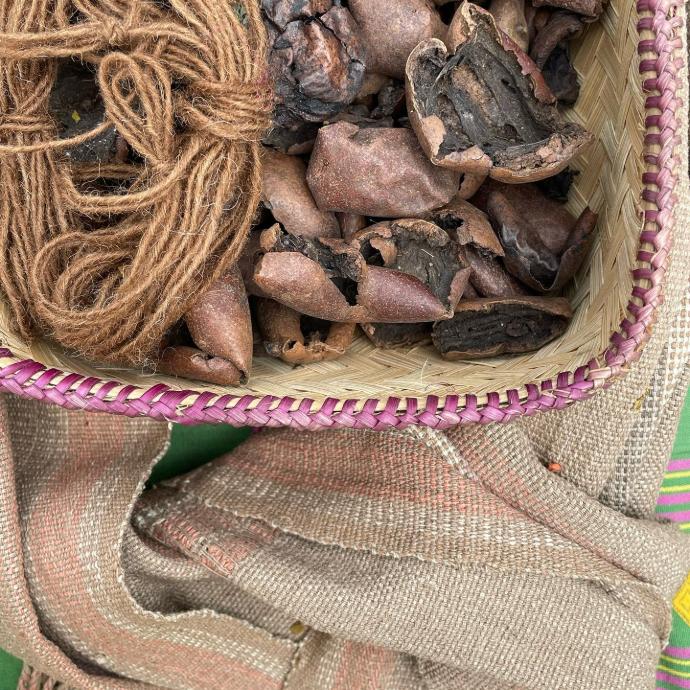Himalayan Walnut
In Bhutan, the Persian Walnut (Juglans regia L.), abundant in the wild, offers a rich source of natural dye. While both the bark and leaves of the walnut tree can be used to create dyes, it is the husk of the fruit that holds particular significance in Bhutanese tradition. For centuries, Bhutanese artisans have perfected a unique fermentation process using the walnut husks, which produces a deep, earthy brown hue. This age-old technique not only enhances the color but also reflects Bhutanese communities' deep engagement with natural dyeing and weaving traditions, weaving a rich history into every strand of fabric.

The walnut dye is a substantive dye, meaning it naturally adheres to fibers without the need for a mordant, making it an ideal choice for sustainable and eco-friendly dyeing practices. This inherent quality allows the dye to bond seamlessly with materials, producing rich, warm shades that are both durable and vivid. The earthy brown tones created by walnut dye evoke a sense of timelessness and connection to the natural world, making it a treasured material in Bhutanese craft and textile traditions.
Beyond its role as a natural dye, the Persian Walnut is also highly valued for its timber. Renowned for its strength, fine grain, and beautiful color, walnut wood is sought after for high-quality furniture and craftsmanship. This dual value—both as a dye source and as a prized timber—adds to the walnut's cultural and economic significance, deeply woven into the fabric of Bhutanese life.